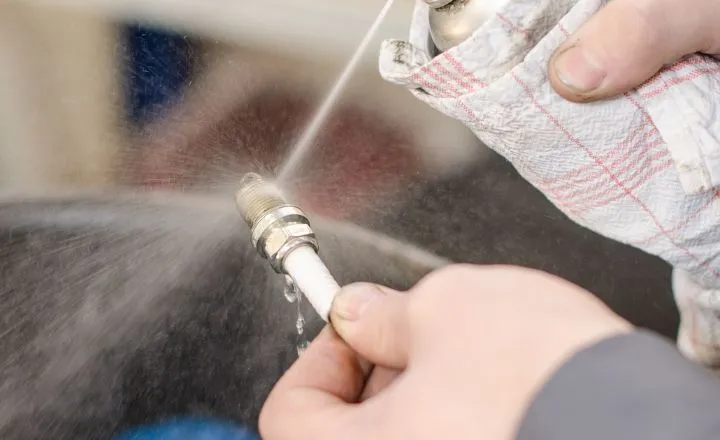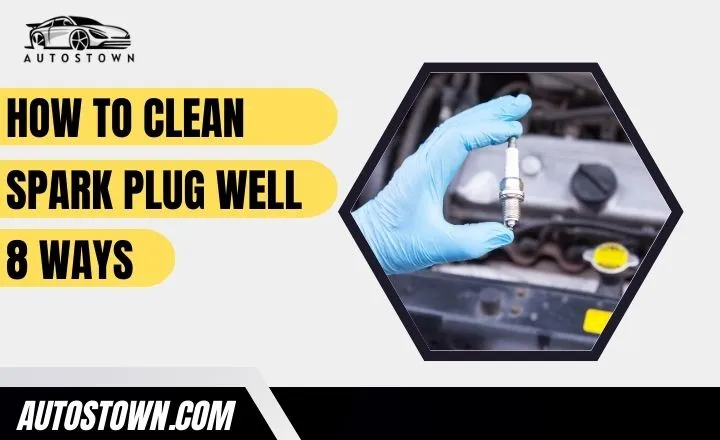Spark plugs are the unsung heroes of your vehicle’s ignition gadget, answerable for igniting the air-gas combination that powers your car. However, over the years, these small yet strong components can emerge as fouled with carbon deposits and other debris, leading to bad engine performance and decreased fuel efficiency. If you’ve observed a hard idle or issue beginning your engine, it could be time to provide some TLC to your spark plug well. How to correctly access your spark plug well, and how to clean spark plug well so that your engine runs easily and correctly.
Tools needed to clean spark plug well
- Wrench or socket for a spark plug
- Spark plug gap instrument
- Spark plug cleaning tool or wire brush
- Optional dielectric grease
- Paper towels or shopping rags
- Protective gloves and eyewear
- Gap gauge for spark plugs
- Anti-seize chemical (For re-installation)
- A torque wrench
- Extension bar, if required
- A fresh towel or cloth to clean the area
How to get oil out of the spark plug well

A leak in the gasket or seal that envelops the spark plug might cause this typical problem. Although it can initially look difficult, draining the oil from the spark plug well is a simple procedure. Let’s get started with some detailed instructions!
1: Remove the spark plug boot
To accomplish this, grasp the boot firmly and gradually twist it back and forth until the spark plug boot releases. Avoid pushing on the wire directly as this might weaken the connection or cause the wire to break. You may more easily clear out any dirt or debris that may have developed in the spark plug well by removing the spark plug boot.
2: Remove the spark plug wires or ignition coil
Your car may have separate spark plug wires or a single ignition coil that links every plug, depending on the model. In any case, gently twist them apart or pull them straight out to detach them. Keep track of the sequence of the spark plug wires or ignition coil after being unplugged for simple re-installation in the future.
3: Remove the spark plug
Before you begin unscrewing, make certain the engine is cool to avoid any burns. Use a spark plug wrench to carefully loosen and then absolutely get rid of the spark plug from the engine. Take this opportunity to inspect the spark plug for any wear and tear symptoms, including carbon deposits or electrode erosion. A worn-out spark plug can cause a bad-performing engine, so changing it at this stage should imply a world of distinction for your vehicle’s overall performance.
4: Clean the spark plug well
To smooth the spark plug well efficaciously, begin by casting off any seen debris with the use of a small brush or compressed air. Then, use a specialized cleanser to very well scrub the interior of the well and do away with any stubborn residue. It’s critical to make certain that no cleansing agent enters the cylinder throughout this system to save you capacity harm to internal components. By keeping an easy spark plug well, you may now not only decorate your engine’s reliability but also improve its performance even by extending its lifespan.
Related:- What To Spray In a Spark Plug Hole – 5 Steps
5: Use compressed air or vacuum
Compressed air can be directed into the properly, blowing out the extra oil and residue. Using a vacuum can also effectively extract oil from the spark plug properly. By carefully maneuvering the nozzle of the vacuum into the well, the suction electricity can draw out the unwanted oil, leaving it in the back of an easy and dry area for the correct spark plug characteristics. However, warning should be exercised to ensure that no debris or overseas gadgets are inadvertently pulled into the vacuum.
6: Set the Spark plug gap
The best fuel economy and combustion efficiency are guaranteed by a sufficient gap. Use a wire gauge instrument made especially for measuring spark plugs to establish the gap. Gently place the gauge between the electrodes, then make necessary adjustments until you reach the appropriate measurement for the precise make and model of your vehicle.
7: Reinstall the spark plug
Take the spark plug that has just been cleaned, and gently place it back into the well by hand. Avoid cross-threading or over-tightening it to prevent breaking the spark plug or damaging the threads. To tighten the spark plug to the necessary torque standards provided by the manufacturer, use a torque wrench or a socket wrench with a torque adaptor.
8: Reconnect wires or ignition coils
This is a delicate method that requires precision and attention to detail. Start by cautiously reattaching the wires to their respective spark plugs, ensuring a stable connection. It’s important to double-check that every cord is properly seated and free from any obstructions that would impede its capability. When reconnecting the ignition coils, align them correctly with the spark plugs and fix them securely in location. Pay close attention to any particular commands provided using your automobile’s producer to ensure proper installation.
This video will help you to understand better!
Symptoms of oil in spark plug well
Here are some common signs of oil in spark plug well.
1. Unveiling the Misfires and Power Loss
When oil makes an unwelcome entry into your spark plug nicely, your car doesn’t stay silent approximately it. One robust symptom that would screech for attention is common engine misfires or uncommon energy loss even as operating. An oil-soaked spark plug can disrupt the electrical current flow, main to inconsistent sparking. This inconsistency results in rough idling, stammering acceleration, and a conspicuous deduction in your car’s ordinary performance.
2. Gas Mileage Concerns and Sour Smells
Oil infection can skew the most effective air-gasoline mixture resulting in inefficient gas combustion and decreased gas mileage. To pinnacle off these symptoms is an unsightly odor – like burning oil, which normally permeates whilst the excess motor oil starts leaking onto hot engine parts inflicting them to smoke.
What causes the oil in the spark plug
For automobile owners, oil in the spark plug well may be an irritating problem. If it isn’t fixed right away, it may result in misfires, poor engine performance, or even engine damage. But why does this oil keep building up in the spark plug well? Here are five typical offenders:
1. Worn Valve Cover Gasket:
The engine block-to-valve cover gap is closed off by the valve cover gasket. This gasket may deteriorate over time, causing oil leaks. A deteriorated valve cover gasket might allow oil to seep into the spark plug well, saturating the spark plug and preventing it from operating normally.
2. Faulty Spark Plug Tube Seal:
Each spark plug tube’s junction with the cylinder head in certain engines is encircled by a silicone or rubber seal. The spark plug well might become contaminated with oil if this seal deteriorates or is broken.
3. Cracked Cylinder Head:
A more serious problem that might result in oil leaking into the combustion chamber and later into the spark plug well is a broken cylinder head. Since the entire cylinder head assembly must be removed and replaced, this issue frequently calls for costly repairs.
4. Blocked PCV System:
When the fantastic crankcase air flow (PCV) system becomes obstructed, it could lead to oil leaking and collecting in sudden places, which include the spark plug wells. This blockage may additionally arise because of engine sludge, carbon buildup, or a faulty PCV valve. Addressing this trouble is essential as the presence of oil in the spark plug properly can bring about misfiring, reduced engine performance, and potentially intense damage if left unresolved.
Conclusion
Maintaining a smooth spark plug well is important for making sure the green engine has overall performance and sturdiness. By following the outlined steps and using the advocated system, you could efficaciously eliminate debris and carbon buildup from the spark plug well. Regular cleansing will help save you from misfires, enhance gas efficiency, and amplify the existence of your engine.
Make certain to test out and clean the spark plug properly periodically, specifically after using it in dusty or grimy situations. By taking those proactive measures, you could keep your engine jogging easily and keep away from high-priced preservation inside Destiny. Keep your automobile strolling at its awesome by way of the use of making spark plug well maintenance a regular part of your ordinary automobile care.
FAQs
1. Do I need to use a cleaner to clean the spark plug well?
Yes, it is recommended to use a spark plug cleaner to remove any built-up deposits stuck in the spark plug well and ensure optimal performance.
2. Is it necessary to clean the surface around the spark plug well?
Yes, cleaning the surface around the spark plug well helps prevent debris from entering the engine and maintains a secure seal for the spark plug.
3. How to find out the recommended spark plug gap for my engine?
You can check your vehicle’s owner’s manual or consult with a professional mechanic for the recommended spark plug gap.
4. Can I use any alternatives for cleaning the spark plugs other than sandpaper?
Yes, you can use a wire brush or specialized spark plug cleaner as an alternative to sandpaper-cleaning spark plugs.
5. What is the proper technique for cleaning spark plug wells?
Start by disconnecting the battery to ensure safety. Then remove the ignition coil (if required) and use compressed air to blow out any loose dirt or debris from the well. Gently brush away the remaining residue with a soft brush or toothbrush. Finally, apply a small amount of dielectric grease on the inside walls of the well before reinstalling the spark plug and ignition coil (if applicable).

